BRONX BARBÈS
Fictional feature film – 2000 – 106′
Produced by Hachette Première and Films d’ici
Distribution Rezo films
WITH LOSS OUSSEINI and ANTHONY KOULEHIDITE
JIMMY DANGER, EDWIGE DOGO, SHANG LEE SOULEYMAN KERE, DAVID CYRIL GUEI




Originally from an Abidjan shantytown, where they were still trying to find themselves, Toussaint and Nixon end up in the Bronx ghetto. Under the supervision of big bro Tyson, they learn the art of robbery and discover a world of easy money, friendship, and love.
These modern-day ‘warriors’ spread terror and dance with death. They are constantly on the run, looking to make a name, a place, a life for themselves.
SYNOPSIS
Having left a shantytown, where they’d been picking up all the casual work they could find, two boys take refuge in the Bronx ghetto. Under the protection of big bro Tyson, they learn about violence, friendship, and fun. However, their relationship slowly deteriorates.
The oldest of the two, Toussaint, adapts to the rules of the game, based on honour and respecting one’s elders, but still seeks a way out through the love of Mariam, a young fish seller. Nixon is more rebellious and challenges the big bros’ rights over the spoils of their boys. He wants to cut corners. He starts a gang of boys and carries out a robbery, which eventually makes Toussaint cross his blood brothers to get him out of prison.
Now reconciled, the two friends have to flee to the Barbès ghetto, run by the bloodthirsty Tarek Aziz. They look for a way out, hoping to change their destiny like the ghettomen of New York, Singapore, Rio, or Paris.
ACTORS
From the ghetto
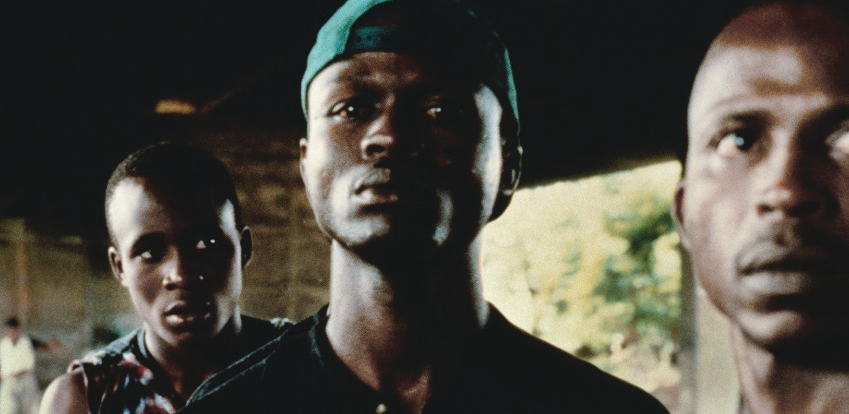
The cast was a mix of various actors but the ghettomen landed the main roles. Although this was their first time in front of a camera, their acting took over the screen, so deeply embedded was it in the codes and nouchi language of the streets of Abidjan.
There was no improvisation; they learnt the dialogues by heart. The ease brought by their cultural proximity to their roles helped with the internal coherence of the scenes. And their emotional subtlety lent beauty and charisma to their characters.
TOUSSAINT – Anthony Koulehi Diaté
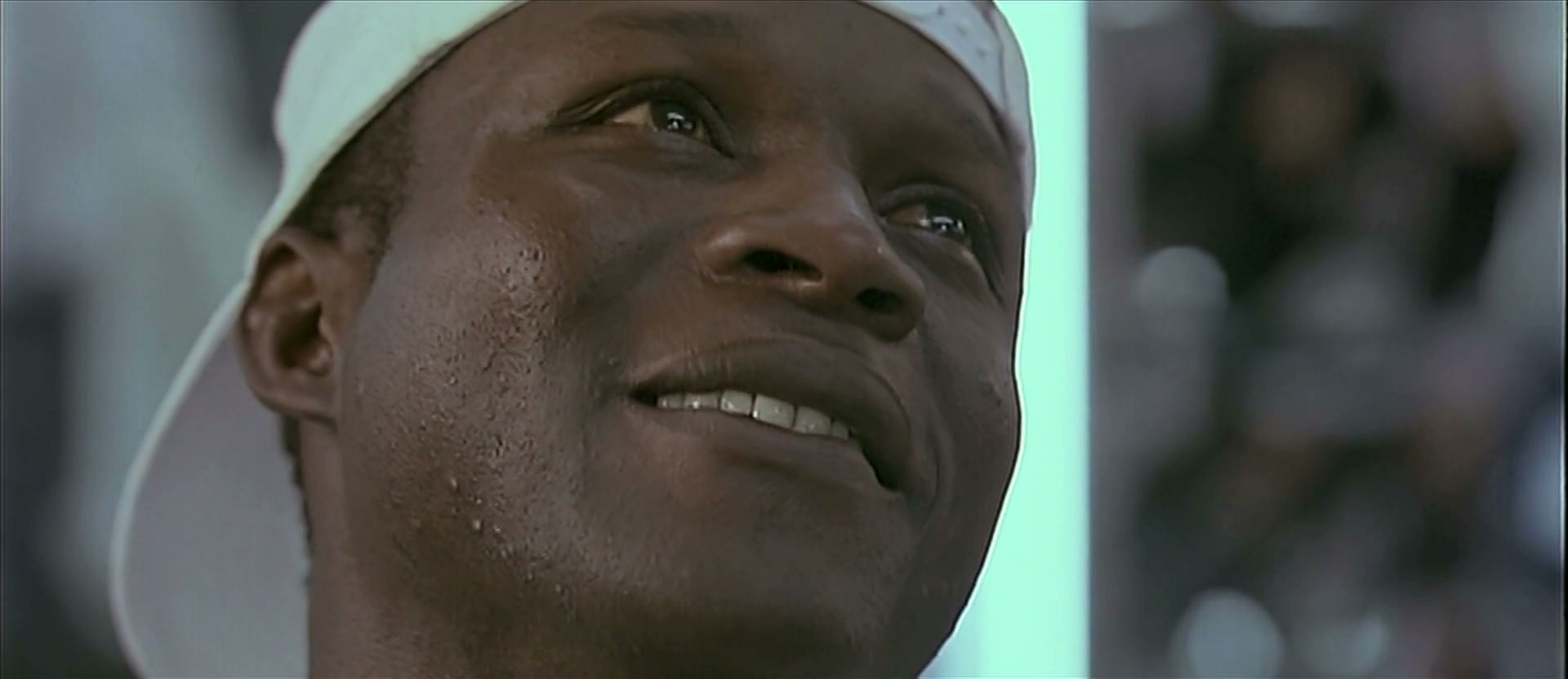
He dreams of America and independence. His approach is to adapt. In the face of the big bros who ‘put law on him’, he can set aside his pride but not his courage. Nixon brings bad luck, but Toussaint will never abandon his boy: ‘A man can change if he has another man by his side, if he has no one, he’ll always do the same things over and over’ he says.
« This story is Eliane’s creation, but there are loads of things I’ve experienced myself in this film.
And like all young people in the world, I want to keep going further to know more. »
Anthony Koulehi Diaté
NIXON – Loss Sylla Ousseini
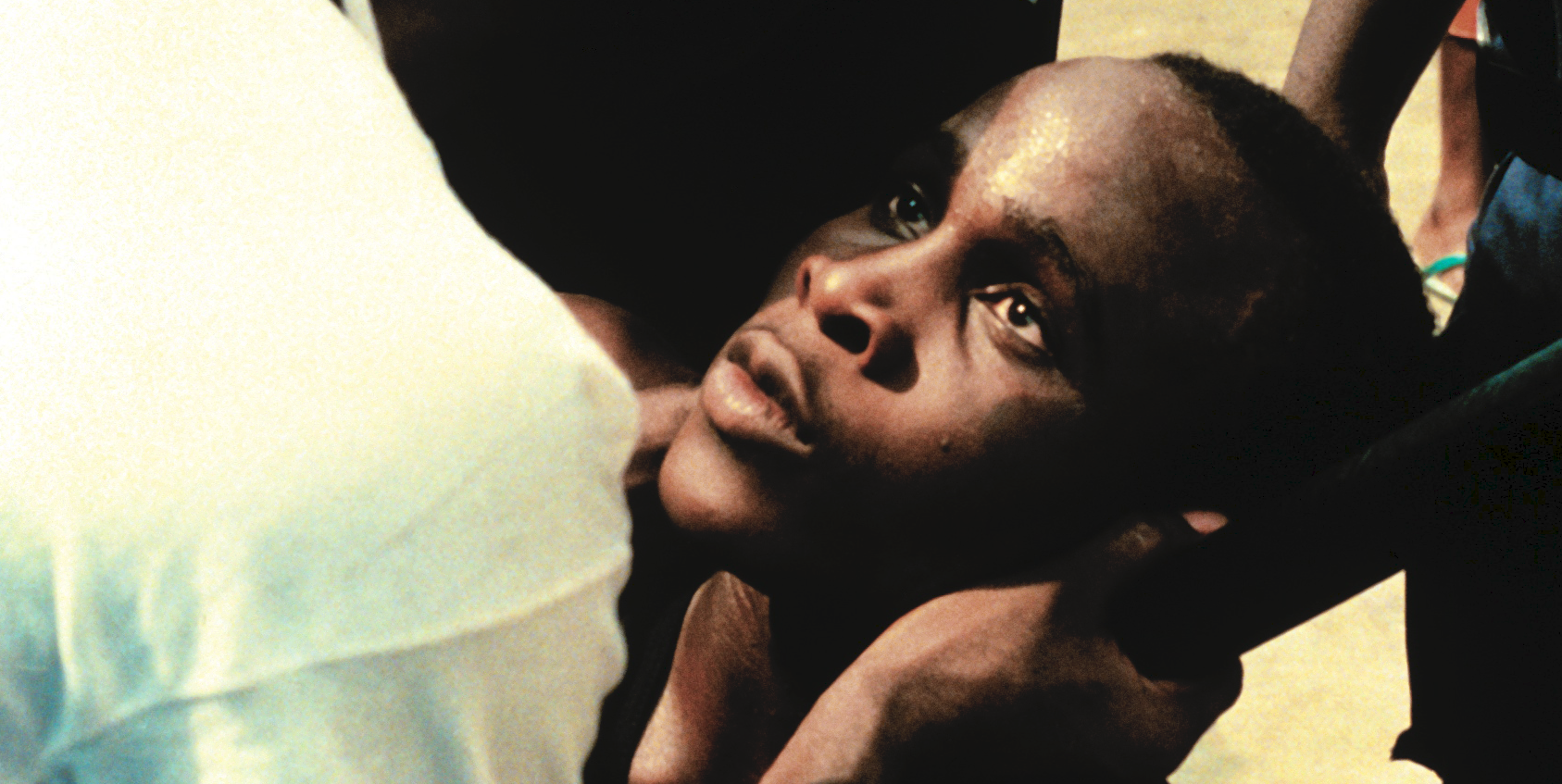
His father was killed ‘in witchcraft’. As he searches for the secret to power, he protects himself with a crucifix and a talisman belt, and prays with Pentecostalists. Drawn to extremes, he personifies danger and puts others at risk. His love of independence makes him call into question the so-called ‘law of the ghetto’, more so than Toussaint.
« Nixon isn’t me, I’m Loss, but this film is my life. »
Loss Ousseini
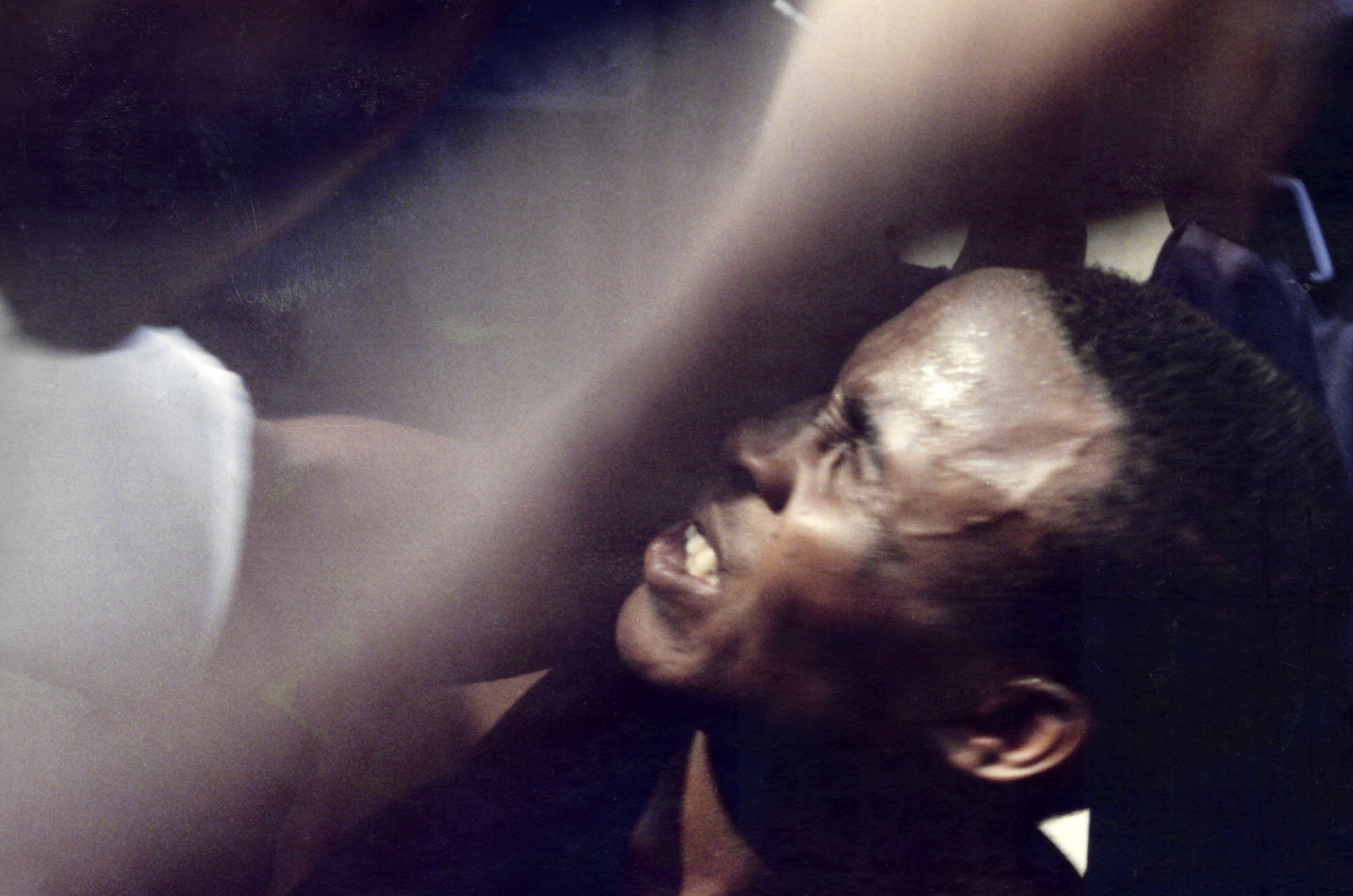
In a cinematographic space strongly codified by Western principles, the ghettomen’s theatricality – entirely appropriate and meaningful in the context of the African streets – might have seemed exaggerated or ridiculous. We had to find a compromise between the need to embed the story in nouchi language and the need to adapt it to the Western context – without, however, giving in to the established order.
DIRECTION
A realism of the imaginary
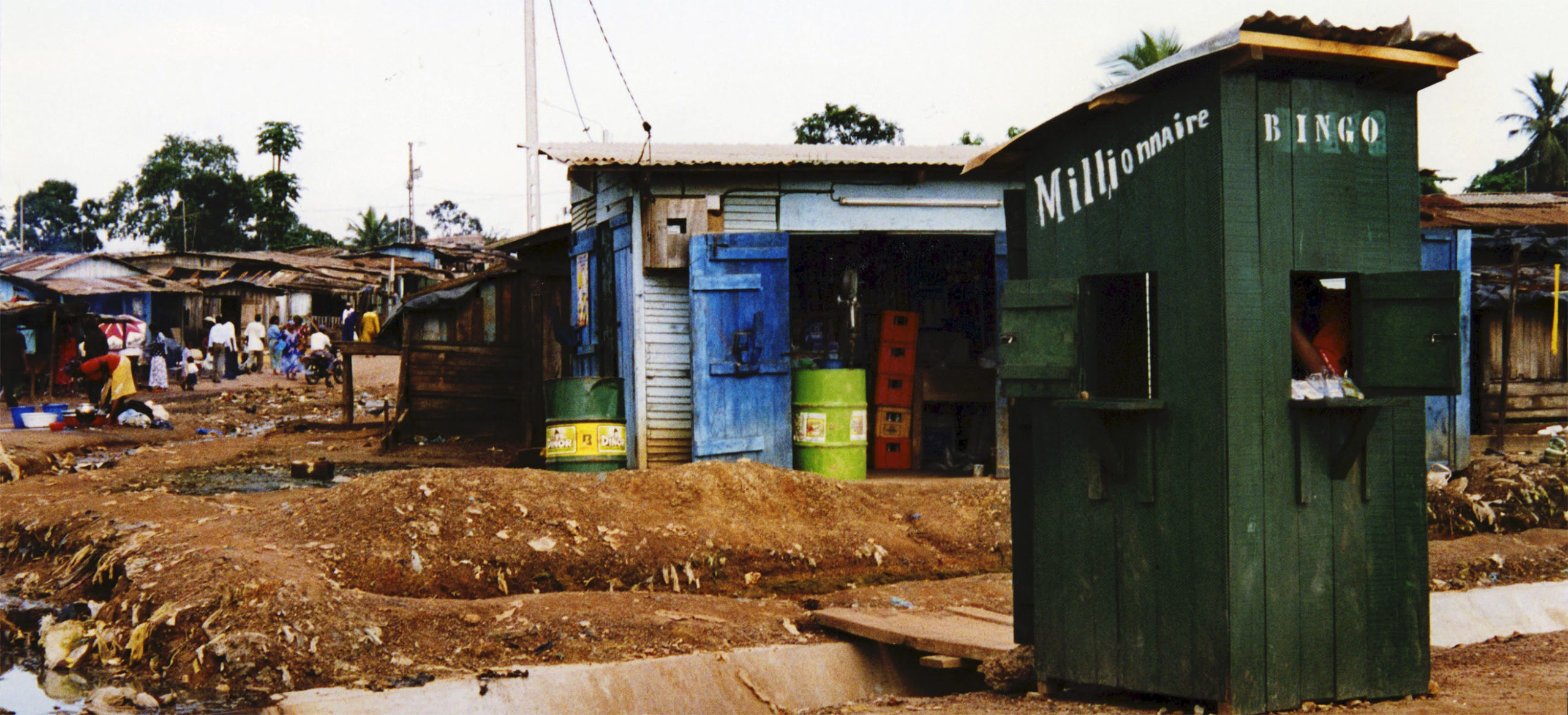
Le Bardot. San Pedro
Bronx Barbès is a fictional tale based on factual information uncovered during fieldwork in the Abidjan and San Pedro ghettos between 1997 and 1999. The narrative is naturally couched in Abidjan street slang and fuelled by the ghettomen’s philosophy of ‘freedom’ as linked to the consumerist models of the West and the power of money. Fiction proved the best way to showcase this symbolic activity, while also providing ethical contracts to individuals who exchanged illegality for acting.
« Far from being illusory façades or deceptive constructions,
fictional worlds are one of the main facets of our relationship to reality. »
Jean Marie Schaeffer

Lynchage d’un ghettoman à San Pedro, novembre 1997.
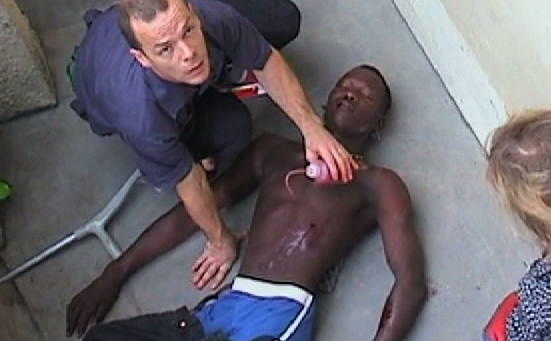
Scène du lynchage de Tupac Amaru. Maquillage 1999.
I wasn’t interested in producing ‘documentary realism’ in the ghetto. Unless one tries to find the meaning behind them, there’s no point in showing literal images of young people protesting, their backs to the wall, or of crackheads staring blankly into space, with at best only a few testimonies to tell their stories. As for the other side to the ghetto – its clandestine, concealed side – this could only be observed directly at night or in other spaces outside the ghetto proper.
Bronx Barbès is a film that does not so much imitate reality as embed itself within it, propelling itself around the hidden spaces from whence events are born.
« When I start writing, the first line might come from reality,
but the second and the third one, I have to write it.»
Pedro Almodovar
I completely agree with what Almodovar says here. It is difficult to distinguish between the parts that are directly drawn from reality – which have, in any case, been adjusted to fit into the narrative – from the parts that are more invented, likewise adjusted to bring out a truth that suspends the spectator’s disbelief and allows the film truly to exist.
This braiding of reality and imagination whose purpose is to perceive in a different way, encourages the emergence of a true vision of this social reality.
It is about the gaze and not about selection.
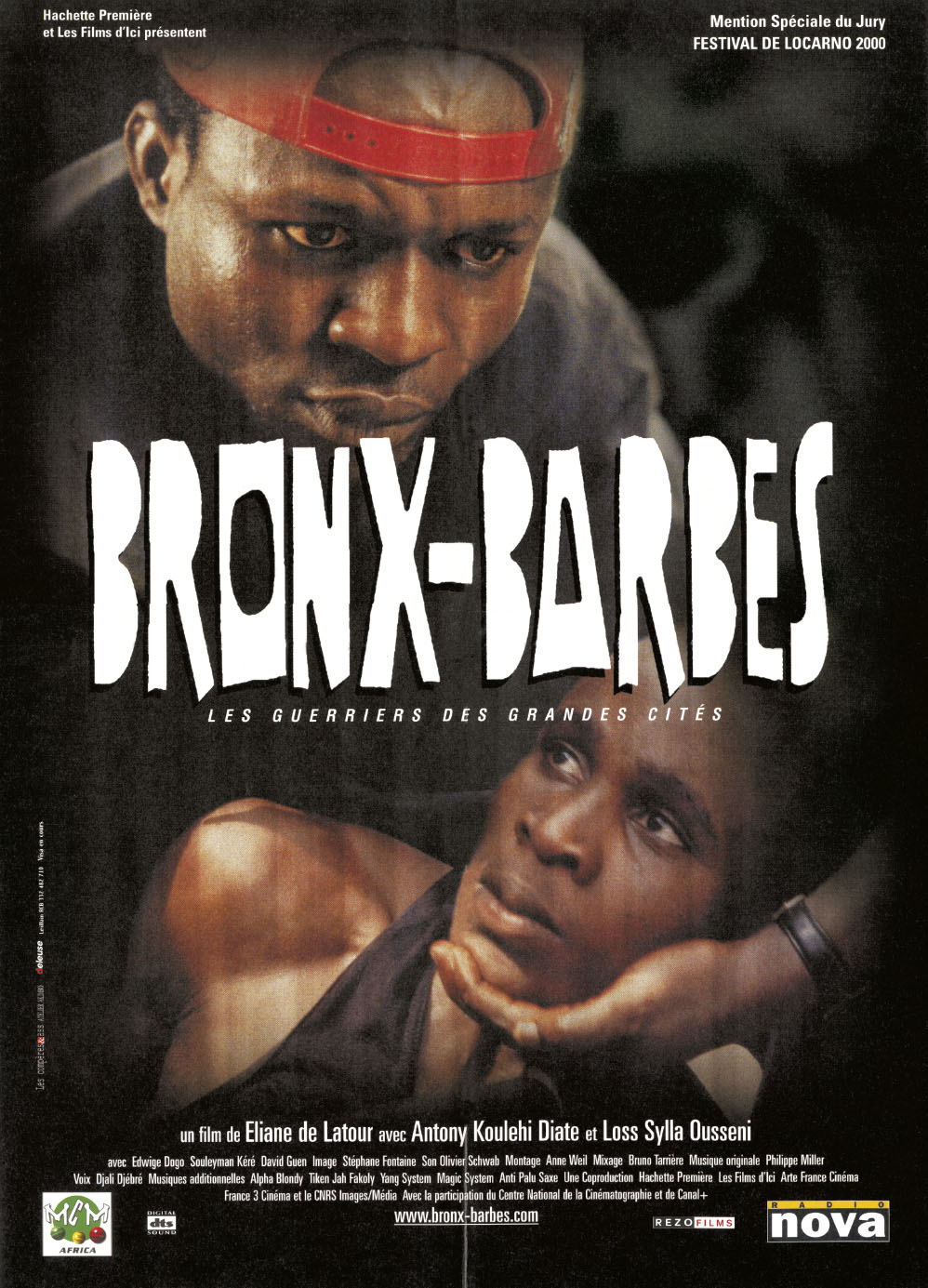
Trailer
« An extremely lucid fiction. Audacious, but also generous. Bronx-Barbès is a terribly human film.»
Le Monde – Thomas Sotinel
« A powerful film that grapples directly with reality. »
Le Figaro
« This film is a great moral fable about our times. »
L’Humanité – Emile Breton
« Eliane de Latour manages to create surprising love scenes, among the most sensual we’ve seen on our screens of late. Striking and appealing. »
Télérama – Louis Guichard
« Blending the formalist rigour of fiction with poetic dialogue that is at once crude and extremely funny, Eliane de Latour breaks away from bleak visions of Africa. »
Le Point
Interview
Éliane de Latour
Some international selections
Quelques sélections nationales
Making off – excerpt
Casting
Divination, starting blocks
Filming
Festival de Locarno
Files to download
Scientific articles to download
THE TEAM
Africans and Europeans
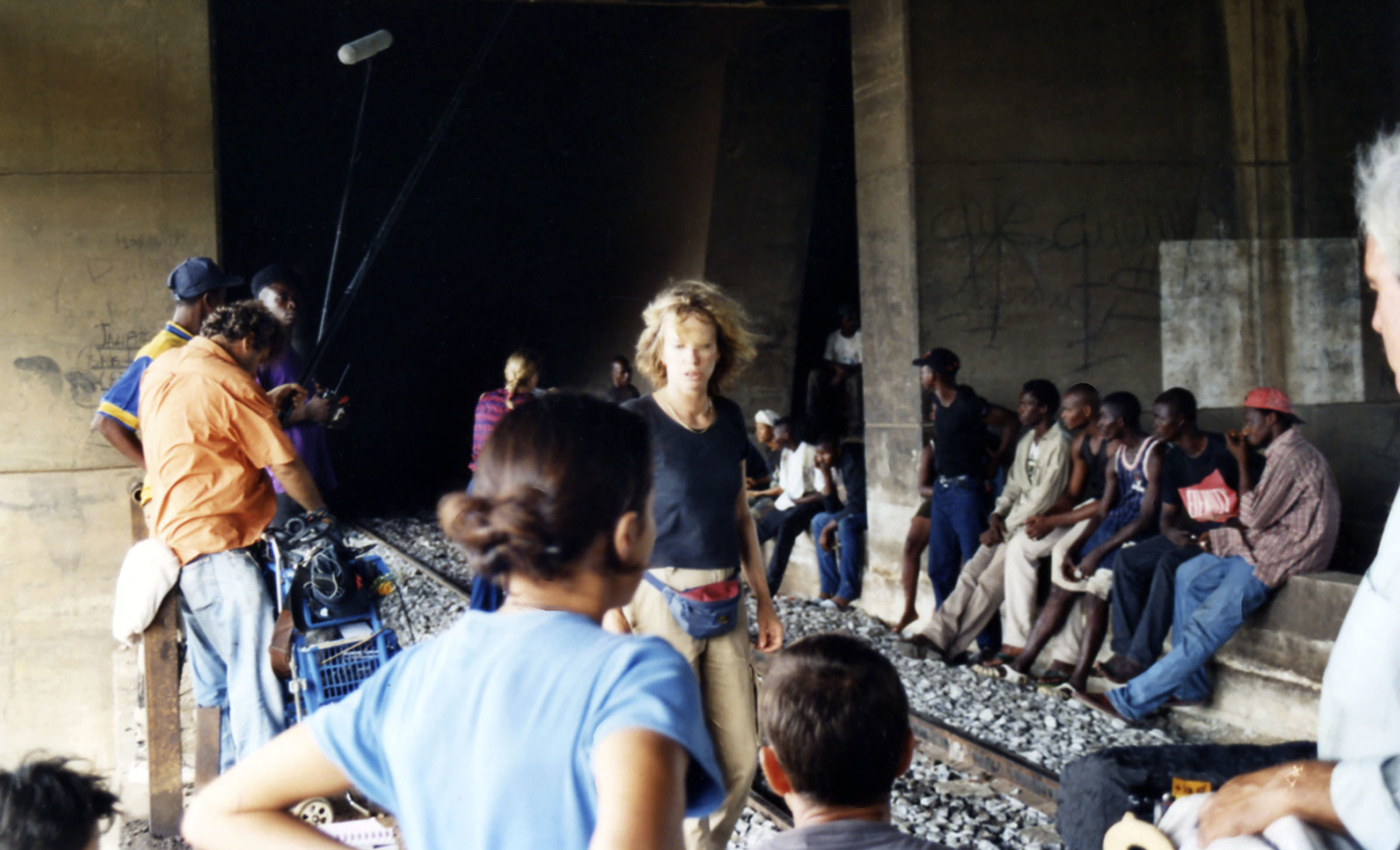
Tournage au ghetto du Colosse.
Bronx Barbès is the fruit of collaboration between Africans and Europeans connected by complicity and a shared desire to produce something, tell a tale, reveal a truth…
Each European manager worked with their boys. There were twelve of us and we used the learning model of the ghetto, with big bros passing on their sciences to young boys: the sciences in question were more legal and reciprocal though! Knowledge was shared on both sides, as we swapped cinema know-how for street know-how.
Image and sound Aaton

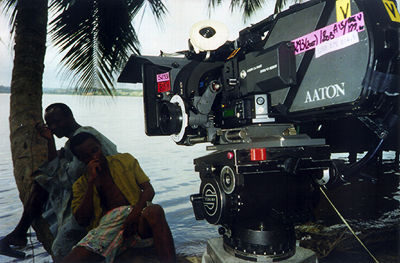
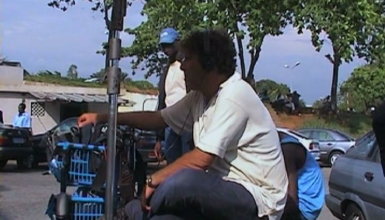

The Côte d’Ivoire team was made up of boys from the streets whom I knew and who hadn’t been selected in the casting. They’d never been on a set before, but found themselves handling sound, picture, costumes, staging, props, special effects, and the control booth.
This was Stéphane Fontaine’s first feature length film as DOP. We shared the same take on cinema, the same point of view about image. The AATON 35mm camera was crucial in allowing us to keep up with the pace of the ghettomen’s language, which required sensitive and ‘all terrain’ tools.
On sound, Oliver Schwob worked with his Cantar AATON and never stopped a scene or refused a noisy backdrop, allowing us to film long shots in harmony with the actors.
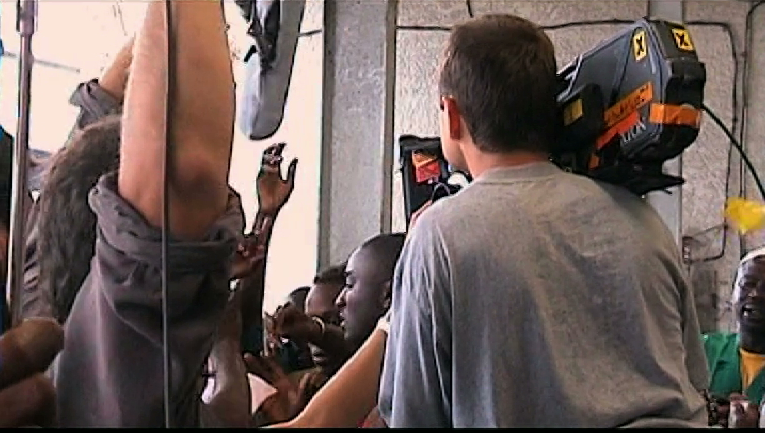
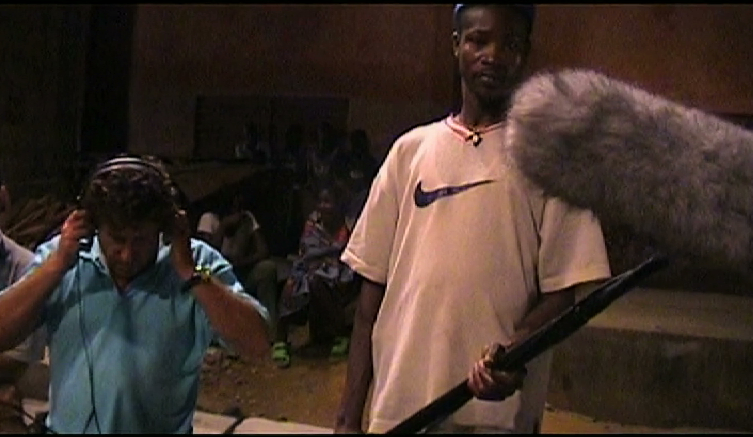
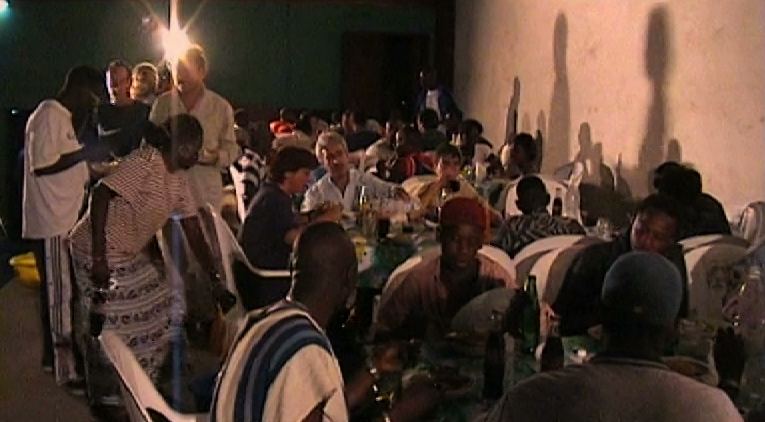
Tous les jours, 60 repas servis par l’équipe de Clementine.
Music
Philippe Miller took various songs and enriched them with Western instruments, such as a bass or a bass clarinet; he also created original music by adding my assistant Djali’s voice.
The tracks played ‘in’ the film were all from Côte d’Ivoire groups, ranging from Alpha Blondy to Anti-Pallu, Magic System, and Tiken Jah Fakoly. It’s the music you hear in the streets and in the maquis (open-air restaurants).
THE GHETTO
Going further
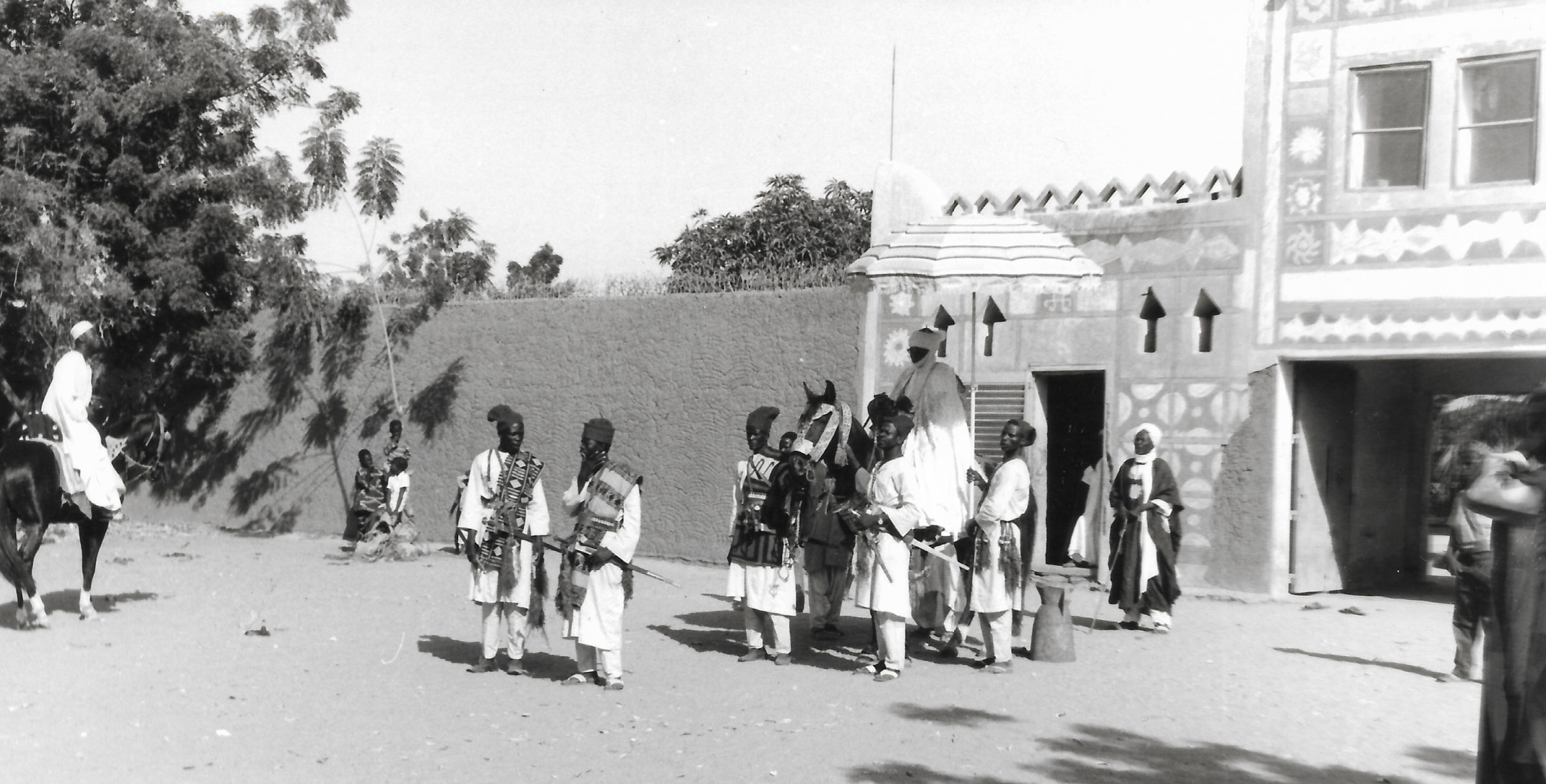

Dubbed Bronx, Barbès, Beirut, Soweto, Boston etc., and nested in various recesses of the city, the ghettos stage the utopias of young people in rebellion as they turn their backs on the dirty, futureless Africa they decry. They come together every day, pooling their resources and creating the collective imaginary of the ‘nouchi’ – a term that describes both the marginal space and its inhabitants.
They combine registers from all horizons: ancestral norms based on the debt to one’s elders, honour codes, Afro-American revolt, neoliberal slogans, bourgeois dreams inspired by Brazilian soaps, superhero fantasies straight out of an American or Asian action film… And through these combinations, they bring into alignment the village, the city, and the world…
Science-ing’ far enough
The ghettomen define themselves as ‘adventurers’, as ‘creative researchers’ who have their own ‘sciences’. When they take their ‘science-ing’ far enough, as they put it, they are no longer dispensable and anonymous, prey to abuse of power, potential targets of any accusation from anyone. The temporal cycles of social life, which imply endlessly waiting, perpetually starting over, and continually facing judgement, seem insurmountable to them. Instead, they cut corners and throw themselves headlong into freedom and immediate satisfaction, despite the attendant risks of being lynched or tortured in a world where they never stood much of a chance…
They have to stand out from the crowd. Making their individual mark is preferable to falling in line with a collective destiny. They eschew docility and choose risk instead.
Entering a new world
The ghetto brings together an ever-shifting community around shared moments. Life revolves around encounters, parties, pleasure, friendship, and love, but also their corollaries: betrayal, jealousy, suspicion, dishonesty, cruelty, and destruction.
Through their illegal actions, the people in the ghetto make the luck of the draw into an invisible law of fate and hope to change their destiny. They invent a virtual world in which they experience real pleasure and die real deaths.
Because they feel as though they are nothing, they want to be everything, right away. They brutally push through boundaries.
What exactly are they looking for in this gamble? ‘Being someone tomorrow’ answers Tyson.

©tomaBaqueni
Taking nothing for granted
The role of each individual is built upon metaphors of social life, whether they relate to family or conquest. ‘Go et gars’ (girls and guys) form couples; ‘big bros’ and ‘big sistas’ have their ‘boys’ and ‘girls’. Social positions are awarded based on experience in the ghetto, taking up the seniority rights common to many African societies. Here, though, the hierarchy is not set in stone.
Everyone is a boy’s big bro’ and a big bro’s boy. Everyone whom a new arrival meets in the ghetto will be his big bro, while all those who come after him will be his boys – with preferential ties linking friends of course.
‘The law of the ghetto’ is constantly invoked and varies according to power relations, conferring legitimacy on transitory power structures. There is no status of big bro’ in and of itself, but instead relational positions negotiated between individuals. They all claim to be ‘merciless’ or ‘total’ warriors, ‘champions’. However, people rally around the warrior who demonstrates the most strength and wealth, leaving his empty-handed counterparts alone. Nothing can ever be taken for granted. The ghetto is an ephemeral space for one and all.
Individuals therefore have to assert themselves quickly, while nevertheless understanding that everything could change again tomorrow. The ghetto is a leap forward towards freedom, but at the same time a retreat into destruction.
Beyond the sea
This buffer zone that protects against the injustice and violence of the outside world closes in on its own internal conflicts, which run unchecked by regulations or authorities. One day, fear and pain become more important than money, and life begins to matter.
They must then look further afield to make good on the hopes engendered by what they glimpse of their fantasies of the West; they must really push north, in order to make something of themselves as heroes in a modern world defined by mobility, cleanliness, honour, fame, and fortune. They are forever hoping to make it to what they think of as the ‘creative centre of the world’.
“No one grows old in the ghetto, everyone gets out, everyone has their”
Nixon

©tomaBaqueni
FILMING VIOLENCE
The rape scene
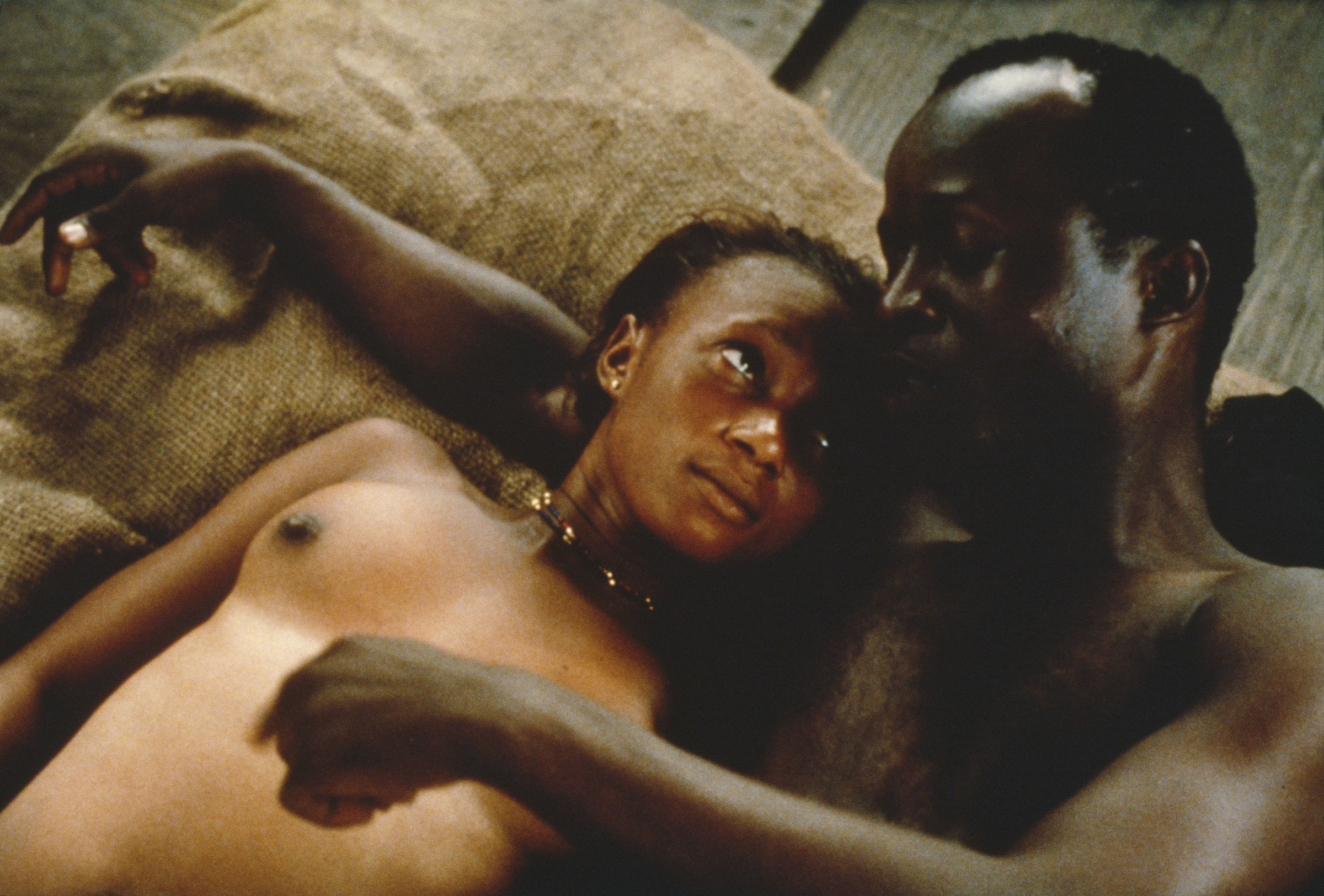
In the film, violence is shown from the point of view either of those inflicting it or – those subjected to it. I never sought to create any spectacular effects for external reasons.
The rape scene was considered shocking in the West…
« If all you do is obey, you remain the lowest of living creatures. »
Tupac Amaru
Using three frames – wide, mid, close – I described the rape from the point of view of the boys’ psychological state at that precise moment in time. They leave a big party, drunk and proud, and spot a girl, who’s an object of fun for them at first. She slaps one of them. In a second, she is reduced to nothing. Their pride has been hurt and they unleash all their power as virile males. Three of them, against one frail girl.
What I wanted to film, in a detached manner, was the mechanical way in which removing all limits becomes part of every day life. When the strength of the pack makes these young ghettomen into loose canons, generating terror. With the hope, above all, of longer being enslaved to the big bros.
I was criticized for not having taken the victim’s point of view. I couldn’t, though. At that point, in that scene, I was looking through her attackers’ eyes and the whole point was that she didn’t exist for them.
She starts to exist in her own right when Toussaint, reticent to the others, offers her that possibility. He lifts her back up on her feet, tries somewhat pathetically to erase the traces of the tragedy by wiping away the sperm running down her thighs, covers her with his shirt and clumsily puts her hair back in place.
Mariam, broken and destroyed, ultimately regains her dignity when, later, she forgives Toussaint. She reverses the relationship by giving him a new integrity, free of shame. She is no longer passive, but active. Certain feminists accused me of having filmed this horror with indifference and of having added to the victim’s abjection by having her forgive her torturer.

In filming this scene, though, I drew on the narratives of girls from poor neighbourhoods who had experienced this degradation. They were scared of the police and the justice system, had no psychologists or victim support groups to turn to, much less any appropriate local government services, and no family prepared to hear ‘that’. Forgiveness, for them, was a way of moving beyond the horror. In giving their attacker the possibility of understanding the meaning of his actions, they raised themselves up and erased the image of their subjection.
I always prefer to follow the stages through which human beings are constructed, deconstructed, and reconstructed rather than throwing myself headlong into immediate compassion, which only serves to foster a weak humanist consensus and impedes any true understanding.
PRESS REVIEWS
France – Côte d’Ivoire – Mali
Released in France on November 22th, 2000
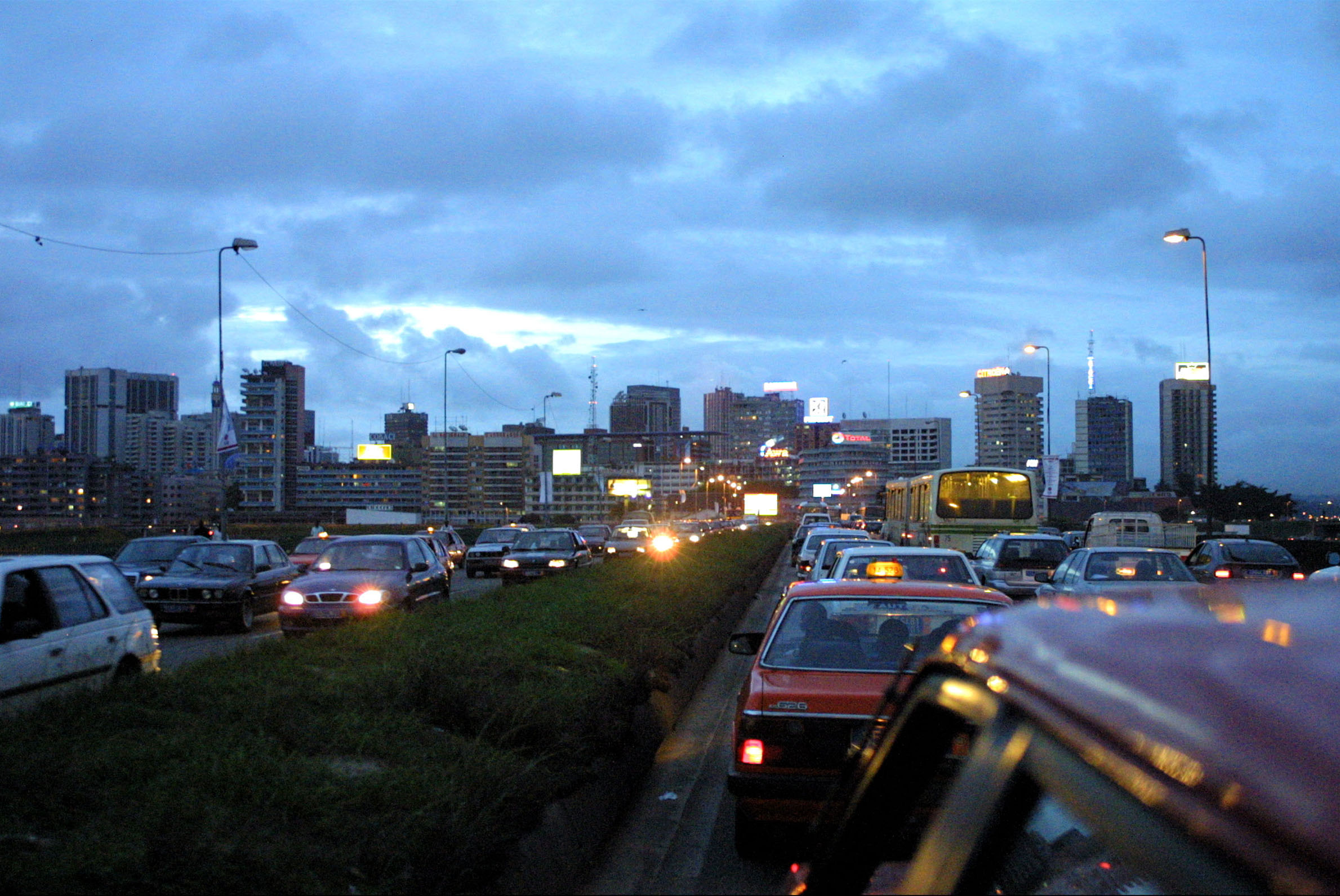
©tomaBaqueni
An extremely lucid fiction. Audacious, but also generous. Bronx-Barbès is a terribly human film.
Le Monde – Thomas Sotinel
Between gangs and ghettos, a new vision of Africa. Eliane de Latour manages to create surprising love scenes, among the most sensual we’ve seen on our screens of late. Striking and appealing.
Télérama – Louis Guichard
This film is a great moral fable about our times. It has no pomposity but infinite respect for its characters.
L’Humanité – Emile Breton
Blending the formalist rigour of fiction with poetic dialogue that is at once crude and extremely funny, Eliane de Latour breaks away from bleak visions of Africa.
Le Point – F-G. L
In the heart of the most bitter of realities, a film that decides, against all common sense, to laugh about it. A fine object lesson that extends beyond cinema.
DNA – [Dernière Nouvelles d’Alsace]
This surprising film recalls certain 1930s Warner productions, such as Angels with Dirty Faces. There’s realism here, but highly stylized by deliberately expressionistic direction. It makes an accusatory point, uses forceful dialogues, foregrounds emblematic characters, includes moments of action, and strikes a skilful balance between comedy and tragedy.
La Voix du Nord
Blending the formalist rigour of fiction with poetic dialogue that is at once crude and extremely funny, Eliane de Latour breaks away from bleak visions of Africa.
Le Point – F-G. L
This Africa, which is not only violent but also energetic and creative, expresses its desire for speed and its desire to join the movement of the new century.
Télérama – Frédéric Strauss
A passionate and fascinating perspective on Africa. A original work that is utterly remarkable.
La Provence
Bronx Barbès is a beautiful film, both painful and funny enough to instil a tragi-comic mood.
Midi Libre
A powerful film that grapples directly with reality.
Le Figaro
Love sometimes gets the upper hand and Eliane de Latour’s film has its dose of emotion and tenderness.
Le Canard enchaîné
Excellent actors.
Le Nouvel Observateur – P. M
Ailleurs
Il fallait soit être atteint de démence, soit tout simplement avoir la foi pour s’atteler à Bronx-Barbès qui s’apparente logistiquement et artistiquement à un tour de force. Un scénario extrêmement écrit, et d’une puissance évocatrice que n’aurait pas renié sur le papier le Scorcese de Mean Streets.
Ciné Live – Grégory Alexandre
Bronx-Barbès est un coup de poing à l’estomac, une œuvre inclassable, un « film d’action » qui amène à la réflexion, un « film d’auteur » plein de bruits, d’ardeurs, de fureur et de tendresse. Du jamais vu jusqu’à présent sur un écran de cinéma.
Revue Critique
On félicite Eliane de Latour pour ce sens du récit, de la mise en scène. Et on la remerciera chaudement de nous avoir présenté une Afrique humaine, sans défaitisme ni bonne conscience.
Ciné Libre – Rémi Jimenez
Un film magnifique consacré aux ghettos africains. Bronx-Barbès est un film passionnant, à nul autre pareil, un témoignage qui ne peut nous laisser indifférent.
Journal du Polar – Stéphane Bugat
Une coloration assez fantastique et poétique que les ruelles de l’Afrique telle qu’elle est, sans fioritures, finissent de transcender.
Aden
Lassée des clichés qui font de l’Afrique soit un continent maudit, soit une éternelle victime, Eliane de Latour signe un film coup de poing.
Zurban – Véronique Le Bris
Released in Côte d’Ivoire on April 18th, 2001

©tomaBaqueni
Bronx-Barbès an overwhelming success in Abidjan. In Côte d’Ivoire, Eliane de Latour’s film is about to beat Titanic’s record.
Le Monde – Juin 2001
The film Bronx-Barbès is the triumph of the “other side” of Côté d’Ivoire. Eliane de Latour is real a hit in cinemas in Côte d’Ivoire. A phenomenon that has overturned the usual domination of American cinema on the continent.
AFP Abidjan – O.M.J.
Bronx-Barbès is making a big splash in the country’s cinemas at the moment. In two weeks, Bronx-Barbès’ box office sales have almost reached those of the famous film “Titanic”.
J. D. – Firmin KotoBronx-Barbès is the film that’s been making a real splash in cinemas for the past two weeks.
Gbich – Madouce
Since its cinema release, Eliane de Latour’s film has been a landslide. On Saturday April 21st, a tightly packed crowd waited in front of the entrance to the biggest cinema “Les Studios”. This dazzling start promises a great career for “Bronx-Barbès”.
Le Patriote – Yves Sangaré
The fine camera movements and beautiful images interspersed with a superb performance by the actors make Bronx-Barbès a film that’s truly worth seeing.
Gbich – Mendozza y Caramba
Eliane de Latour avoids caricature, miserabilism, and sentimentality. The film is powerful and original, a fascinating fictional tale.
Notre Voie
Eliane de Latour has a lot of merit. She shows us that alongside the hushed drawing rooms of the capital, a large number of beggars and paupers are tirelessly waiting for their slice of the national cake.
Libéral – Bakary Nimaga
Bronx Barbès is performed by amateurs with untold abilities. A good film that brings us back to our reality and life truths.
Top Visage
A really strong film. Eliane de Latour’s Bronx-Barbès has rhythm, pace, energy, humour, and the poetry of the streets – it is an “explosive” cocktail mixing together the bright lights and dark shadows of the great urban spaces in Africa and the world.
L’Agora – Kader Assoumane Bamba
The scenes mainly filmed in Abidjan and San Pedro are fast-paced. The actors, mainly young novices, are directed to perfection. A fine work of fiction by Eliane de Latour.
Le Patriote – Liliane Tiépokin
This film wants to erase the catastrophic image of the Black continent that is presented in the West. A must-see film in the days to come.
La Bombe – D.T.
Far from clichés about eternal Africa, she [E de L] presents us with Abidjan’s marginalized youth. Between violence, mythology, and friendship, a new urban generation – the ghettomen – proclaim their desire to make it.
Volontaires – Yves Hardy
Released in Mali February 18th, 2003
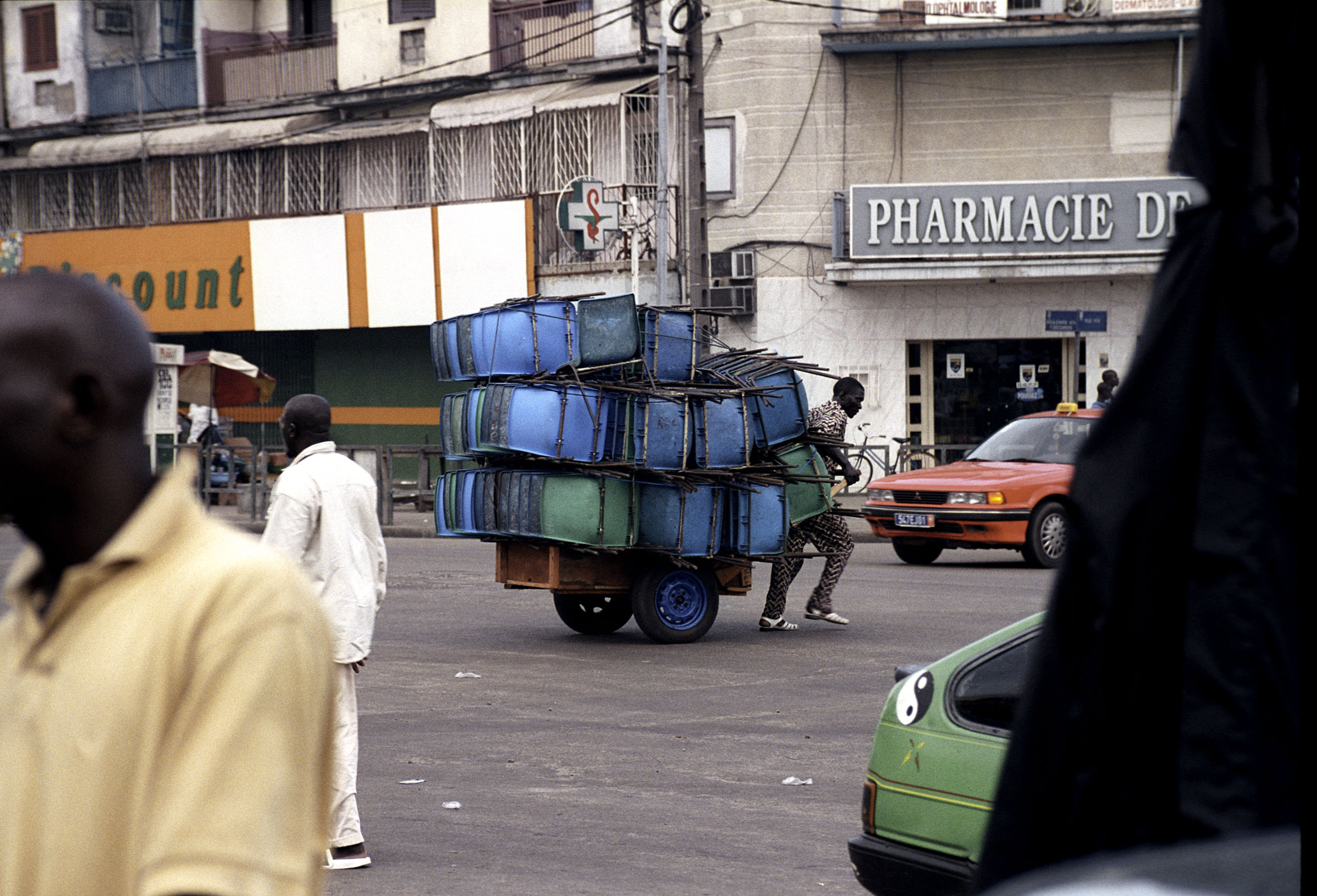
One of the great moments in the film is the sequence with the funeral of one of the gang leaders, during which the men vie with another, presenting ever larger wads of cash, ever more theatrically, whilst the women let their tears fall. This action film makes dialogue into one of its main focuses. It builds out from the social and leans towards the stuff of legends.
Le Zénith Bale
Eliane de Latour has the merit of having shown Africans and Europeans what unites them: Bronx, Barbès, Soweto.
Le Soir de Bamako
African emotion. This is a remarkable feature filmed in the Côte d’Ivoire capital. These 110 minutes of truthful cinema are beautiful, hard, and inexorably accurate.
L’Indépendant
Bronx-Barbès is a masterpiece by French filmmaker Eliane de Latour; its beautiful images and perfect sound confirm her talent. This is a film to see at all costs. Especially for decision-makers and young people.
Le Reflet
Released in Burkina-Faso, Niger, and Benin
We have seen no press coverage or box office reports from distributor Aïda, but word of mouth suggests that there were a lot of people in the cinemas.